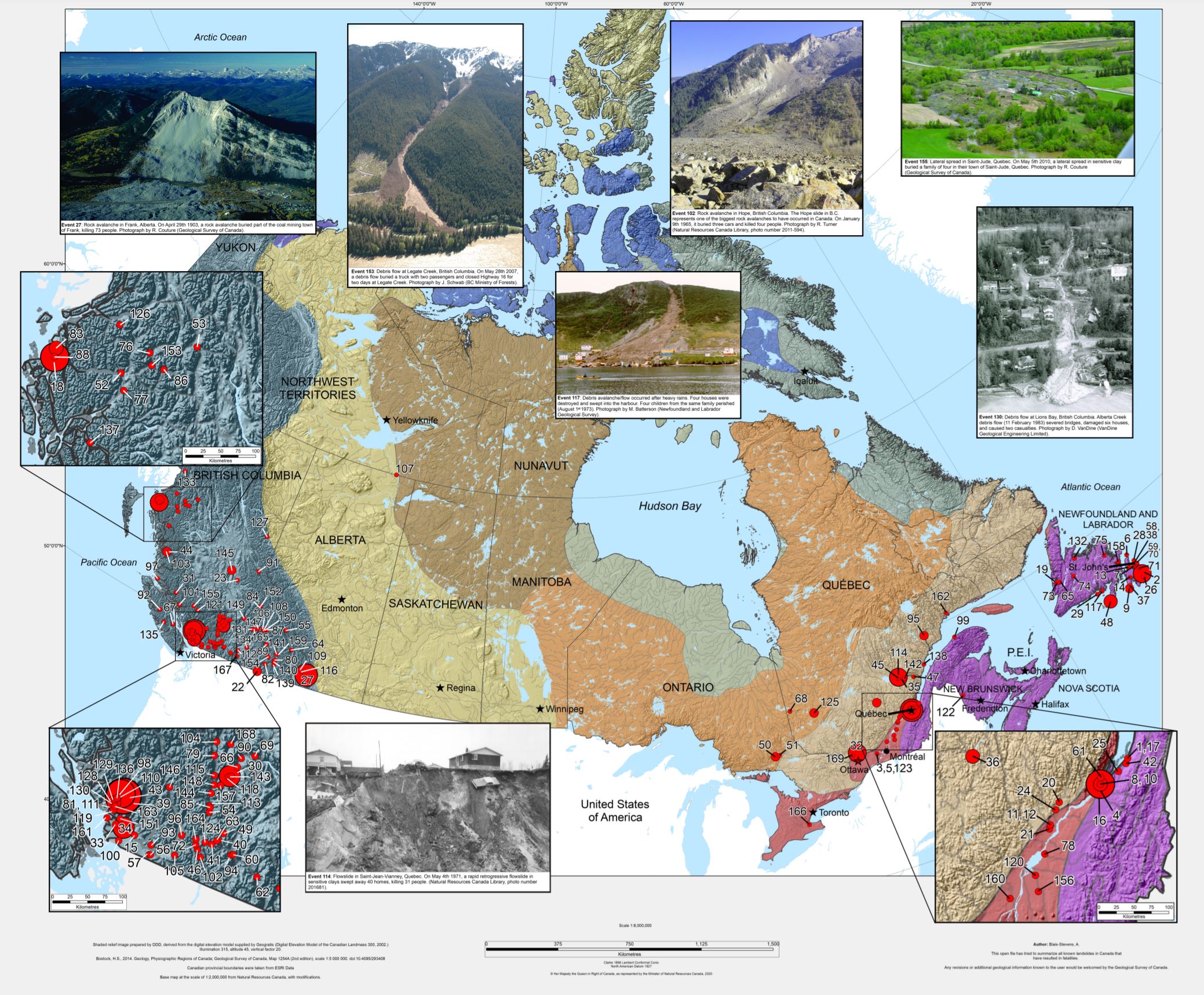11 May 2021
Historical landslides that have resulted in fatalities in Canada
Posted by Dave Petley
Historical landslides that have resulted in fatalities in Canada
In Canada, the Pembroke Observer and News has a nice article, published late last week, about historical landslides that have resulted in fatalities in that country. This article is based upon a really good graphic published by the Geological Survey of Canada, which provides detailed information about known fatal landslides between 1771 and 2019. The document (Blais-Stevens 2020) can be downloaded from the Natural Resources Canada website (it is a 46 MB PDF). This is main map from that document:-

A map showing historical landslides in Canada, from Blais-Stevens (2020).
.
Most of the landslides occur on either the west or the east side of the country. There is a more detailed graphic included in Blais-Stevens (2020) for these two areas:-

Maps showing historical landslides in Canada, highlighting the hotspots in the east and west of the country, from Blais-Stevens (2020).
.
In total there have been at least 785 fatalities from landslides in the period between 1771 and 2019. The Pembroke Observer and News article makes a couple of very interesting observations about the historical landslides in Canada dataset:
[Natural Resources Canada] said landslides most often happen in rocky, mountainous places, although geological formations such as sensitive clay may also collapse and cause landslides. Unstable soil is the most common cause of landslides in the St. Lawrence Valley – located from Ottawa to Quebec City – and east to the Saguenay region.
And thanks to geological research, fatalities due to landslides in Canada have decreased over the past decades.
Last week was the 50th anniversary of the fatal landslide at Saint-Jean-Vianney in Quebec, in which 32 people were killed. That landslide, which had a volume of 6.9 million cubic metres, was a retrogressive quick clay landslide. I have covered many other major landslides in Canada over the years, including the 2010 Mount Meager landslide and the 2012 Johnsons Landing landslide.


 Dave Petley is the Vice-Chancellor of the University of Hull in the United Kingdom. His blog provides commentary and analysis of landslide events occurring worldwide, including the landslides themselves, latest research, and conferences and meetings.
Dave Petley is the Vice-Chancellor of the University of Hull in the United Kingdom. His blog provides commentary and analysis of landslide events occurring worldwide, including the landslides themselves, latest research, and conferences and meetings.